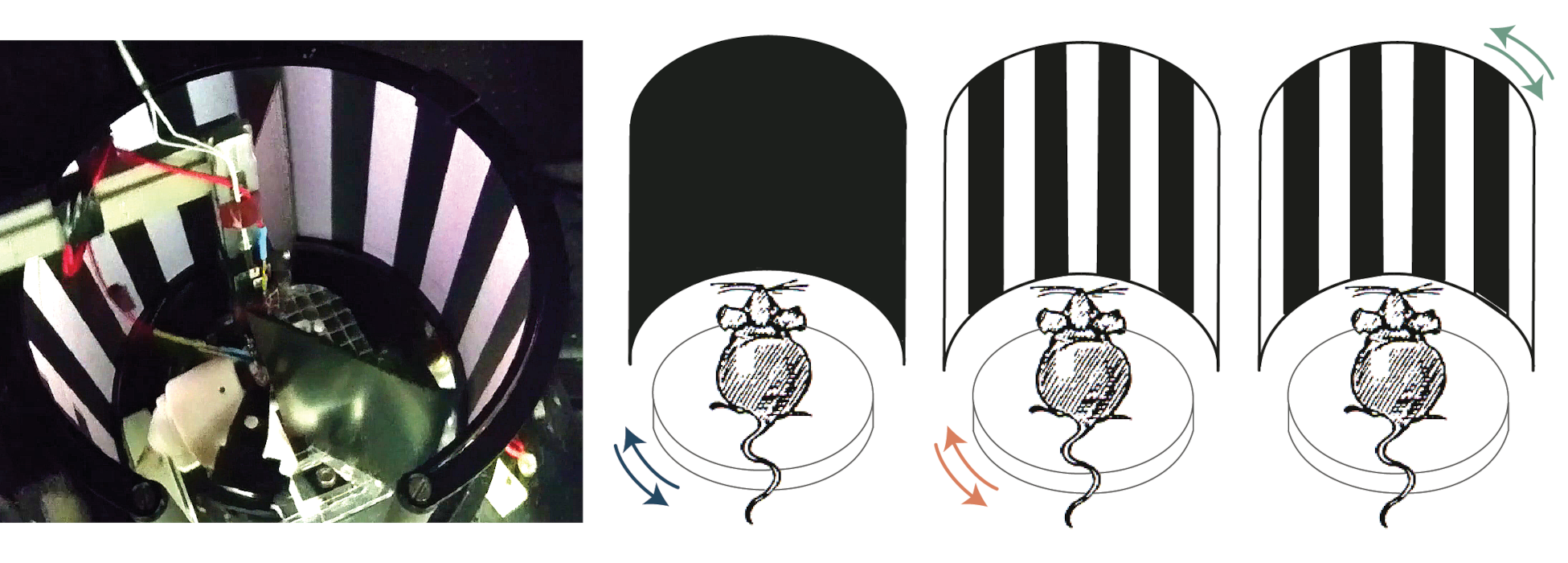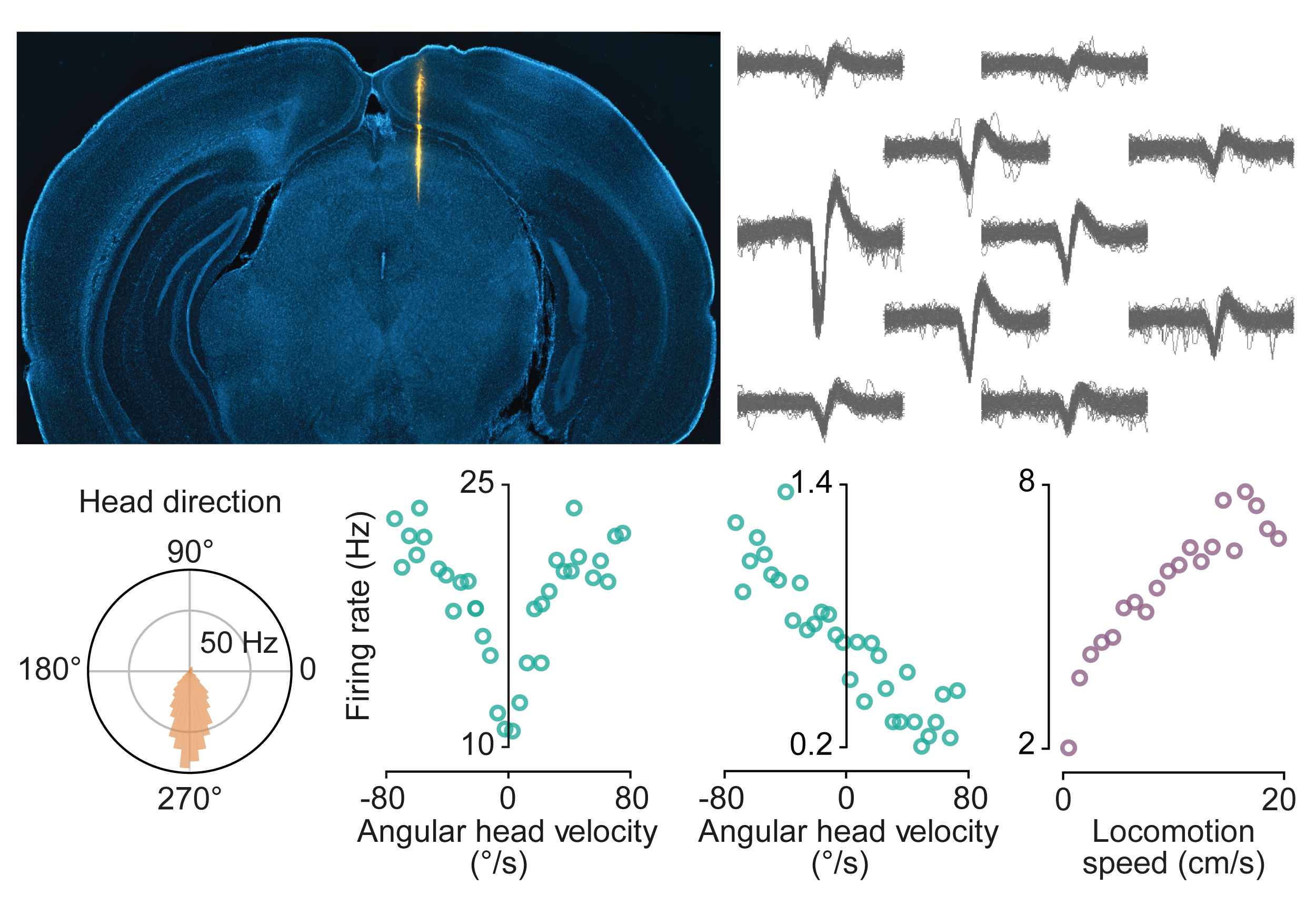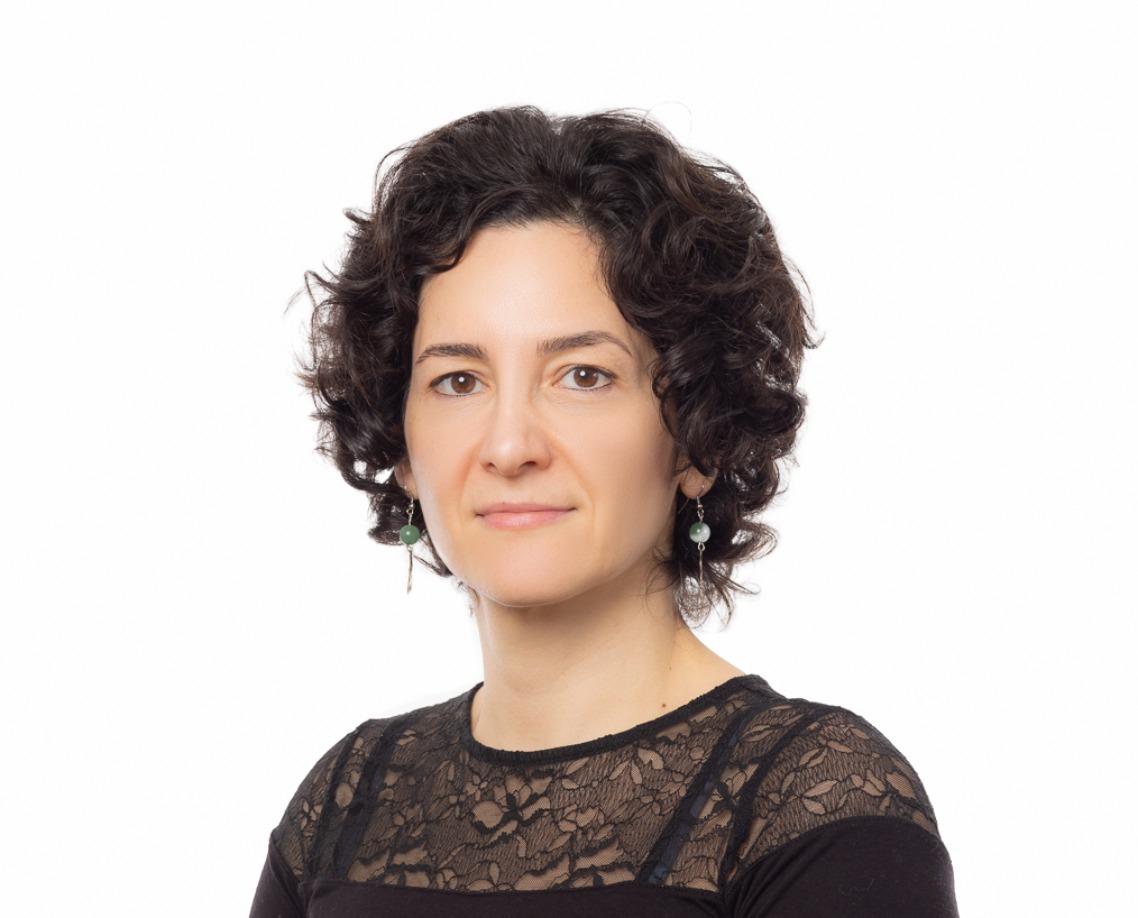Research
The broad goal of our research is to understand how neurons and the brain circuits in which they are embedded use incoming sensory information to generate cognitive processes and guide behaviour.
Our primary focus is on the neural underpinnings of the sense of self-motion and orientation in space. Knowing which way we are heading, how fast we are moving, and our orientation relative to a given location requires the processing and integration of various sensory signals from the body and the surrounding environment. We aim to determine how these different types of information are organised and integrated within thalamocortical and intracortical circuits involved in spatial navigation and how they contribute to orientation computations and behaviour. We investigate these questions both in the healthy adult brain and also during ageing. In doing so, we hope to gain deeper mechanistic understanding of spatial cognition and why it tends to decline with age.
Our research employs cutting-edge approaches in cellular and systems neuroscience, using the mouse model. We examine behaviour in both freely moving and restrained animals while recording neuronal activity using electrophysiology and calcium imaging. Additionally, we manipulate neuronal activity in specific cell types and circuits with the use of genetic and viral tools to investigate their contribution to behaviour. We combine these approaches with anatomical tracing and in vitro intracellular recording to understand how the functional organisation of neural circuits shapes computations and behaviour.
To learn more about our research questions and approaches, please visit our lab website.
We have multiple open positions!
Are you interested in joining our lab as a PhD student or postdoc? We welcome your application! Please send your CV, along with a brief description of your research background, research interests, and future goals, as well as your reasons for wanting to join our lab and how you see your skills fitting with our research. Additionally, provide the contact details of two referees to Sepiedeh (sk2244@cam.ac.uk). If you are applying for PhD or research assistant positions, please also indicate your overall grade for each higher education degree in your CV and ideally provide your degree transcripts. Job ads will be announced on our lab website, but we also welcome informal applications on a rolling basis throughout the year.
-
PhD students
We are seeking highly motivated prospective PhD students who are interested in our work and have a strong knowledge of the field of circuit/systems neuroscience. The ideal candidate will have outstanding academic performance, relevant research experience, and excellent communication and analytical skills. We encourage you to get in touch well in advance of the funding application deadlines.
See think link for more information about our current open PhD positions and how to apply.
For exceptional candidates, there is a possibility of a lab-funded PhD by initially joining as a research assistant before commencing their PhD.
-
Postdocs
We have funded postdoctoral positions available for self-motivated candidates interested in contributing to our research on the neural circuits underlying self-motion perception and spatial orientation. We are seeking skilled candidates who hold a PhD in neuroscience or a related discipline and have excellent verbal and written communication skills in English.
The successful candidate will have prior experience in circuit/systems neuroscience techniques, such as electrophysiology (either brain slice or in vivo) or in vivo calcium imaging. Competency in data analysis and strong analytical skills are essential. Additional highly desirable skills include proficiency in programming (Python and/or Matlab), experience in designing and building bespoke experimental setups, and expertise in developing quantitative behavioural tasks for rodents.
We would also support fellowship applications for independent postdoctoral funding (See an overview of funding opportunities here and on our lab website) and are open to discussing projects proposed by candidates that fit within the lab's research program. If you plan to apply for postdoctoral fellowships, we encourage you to familiarise yourself with the eligibility criteria and contact us well in advance of your intended start date.
Publications
Keshavarzi S, Bracey EF, Faville RA, Campagner D, Tyson AL, Lenzi SC, Branco T, Margrie TW, Multisensory coding of angular head velocity in the retrosplenial cortex. Neuron 2022, 110(3): 532-543.
Velez-Fort M*, Bracey EF*, Keshavarzi S*, Rousseau CV*, Cossell L, Lenzi S, Strom M, Margrie TW, A circuit for integration of head- and visual-motion signals in layer 6 of mouse primary visual cortex. Neuron 2018, 98(1):179-191. * equal contribution
Keshavarzi S, Power JM, Albers EHH, Sullivan RK, Sah P, Dendritic organization of olfactory inputs to medial amygdala neurons. Journal of Neuroscience 2015, 35(38): 13020-13028.
Keshavarzi S, Sullivan RK, Ianno DD, Sah P, Functional properties and projections of neurons in the medial amygdala. Journal of Neuroscience 2014, 34(26): 8699-8715.
Keshavarzi S, Velez-Fort M, Margrie TW, Cortical integration of vestibular and visual cues for navigation, visual processing, and perception. Annual Review of Neuroscience 2023, 46: 301–320.
Campagner D*, Vale R*, Tan YL, Iordanidou P, Pavon AO, Claudi F, Stempel AV, Keshavarzi S, Petersen RS, Margrie TW, and Branco T, A cortico-collicular circuit for orienting to shelter during escape. Nature. 2023, 613(7942):111-119.
Harris JJ and Keshavarzi S, Bringing together immediate early genes and sensorimotor response properties in V1, Peer Community in Neuroscience. 2022, 100005.
Soulat H, Keshavarzi S, Margrie TW, Sahani M, Probabilistic tensor decomposition of neural population spiking activity. Advances in Neural Information Processing Systems 34, 2021.
Tyson AL*, Rousseau CV*, Niedworok CJ*, Keshavarzi S, Tsitoura C, and Margrie TW, A deep learning algorithm for 3D cell detection in whole mouse brain image datasets. PLOS Computational Biology 2021, 17(5): e1009074.
Parinejad N, Keshavarzi S, Movahedin M, Raza M. Behavioral and histological assessment of the effect of intermittent feeding in the pilocarpine model of temporal lobe epilepsy. Epilepsy Research 2009, 86(1): 54-65.
Amoli HA, Golozar A, Keshavarzi S, Tavakoli H, Yaghoobi A. Morphine analgesia in patients with acute appendicitis: a randomised double-blind clinical trial. Emergency Medicine Journal 2008, 25(9): 586-589.
Nejat F, Keshavarzi S, Monajemzadeh M, Mehdizadeh M, Kalaghchi B. Chronic subdural hematoma associated with subdural rhabdomyosarcoma: case report. Neurosurgery 2007, 60(4): E774-775.
Keshavarzi S, Nejat F, Kazemi H. Double spinal dysraphism. Report of three cases. Journal of Neurosurgery 2007, 106(4 Suppl): 316-8.
Teaching and Supervisions
Part II/N3, Circuits & Systems – The Vestibular System in Cognition
Part II/N2, Experimental Tools for the Neuroscientist – Neural Circuits of Behaviour
Part IB, Neurobiology & Human/Animal Behaviour – Biology of Neurons
Part IB, Human Neuroanatomy Practical




